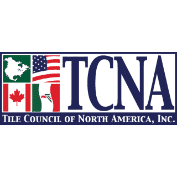Our Coverings 2014 Speaker Blog Series continues with a guest post from Mike Clancy, the Principal of Fails Management Institute, a management and investment-banking consultancy for the engineering and construction industry.
Whether your firm is a national construction manager or a local mechanical contractor, the ability to sell work is more important than ever. However, the availability of highly skilled work-acquisition specialists remains tight. If you have any of these people on your staff, you are trying to ensure they are happy and not going anywhere.
A well-designed performance management and incentive compensation program is a valuable tool to attract, retain and motivate the best talent. However, the construction industry has often struggled in implementing systems to track and manage individual performance. While all companies would like to believe that they have a clearly articulated strategy that unites the entire company, the sad fact is most firms have individuals with different levels of understanding company strategy and often vastly differing personal goals. The overarching goal of a business development team is to bring in profitable opportunities that align with the firm’s operational capacity and support the company’s strategic direction. In other words, not all business that could be developed is necessarily good business.
It is easy to use a three-legged stool analogy in evaluating opportunities to pursue. Any opportunity that is not one of the following should not be pursued:
Profitable work
Work that aligns with the operational capabilities
Work that aligns with the strategic direction of the firm
Employees should not be rewarded for bringing in one- and two-legged opportunities, lest the company’s strategy falls prey to an individual employee’s desire to maximize personal compensation.
A well-designed incentive program for business development and estimating keeps the business strategy in mind. It also balances input- and output-driven measurements. An input measurement tracks the effort put in, while an output measurement tracks results. Both should be used as part of the scoring criteria for the estimators and business developers.
The final step is tying this scorecard to the incentive compensation payout, reflecting one of the following two core methodologies:
Target Bonus: A specific dollar amount or percentage of salary established as a goal for the employee. Compare this targeted amount to industry averages to ensure the incentive is aligned with what is available for the role in the broader market, lest it be too small to have any effect.
Uncapped Commission: It is most commonly is used with business development employees and tends to work best in organizations with strong management and project selection systems to ensure that business development employees do not bring in marginal opportunities in an attempt to inflate their compensation artificially.
Employers must provide an environment where the best work acquirers are incentivized and valued. It is important to stick with scorecards that measure the right inputs and outputs. By incentivizing the right behavior in your business developers and estimators, the more likely you will keep your best people and attract superior talent from the outside.
Mike Clancy will be speaking on Thursday May 1, 2014 from 1:30 PM – 2:30 PM at Coverings in Las Vegas, discussing the topic: “Estimating for Advantage: Do You Really Know Why You’re Bidding This Job?” Click here for more information on his session and to view the full list of Coverings 2014 conference sessions. Don’t miss this session – register now for free to attend!






